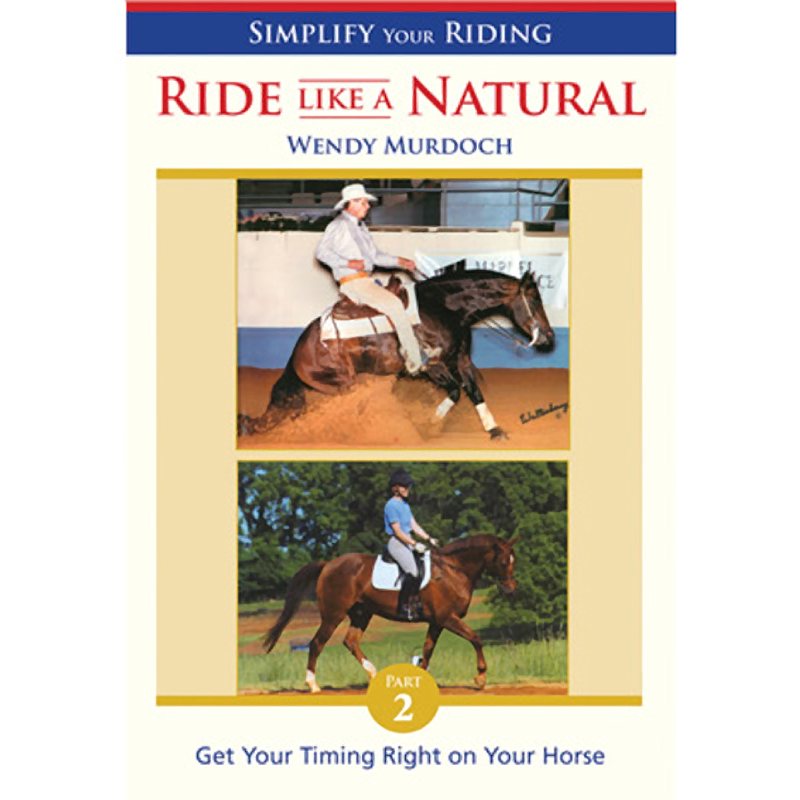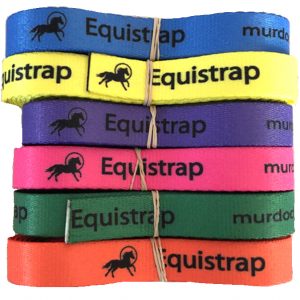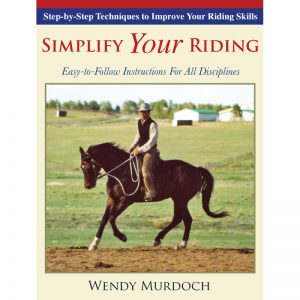Description
Simplify Your Riding Ride Like a Natural®
In these DVDs you will learn how to do what great riders do naturally.
Wendy Murdoch leads you through a series of exercises that will make positive changes to your riding and your horse’s performance. Improve your communication, comfort and partnership with your horse in minutes not lifetimes.
Part 2. Timing it Right on Your Horse
When you are in good alignment you will have the potential to communicate clearly with your horse. In Part 2 Wendy shows you how to time your aides within the horse’s movement to minimize your aids and maximize your horse’s responsiveness.
In this DVD you will learn:
• What the aids are
• Why it is important to have good timing
• What is the right time to apply the aids
• How to feel your timing in the walk, trot and canter
• How to improve your riding relationship with your horse through good timing
DVD Chapters
Introduction
The goal of the Ride Like a Natural series is to teach people how to ride safely, efficiently and effectively. This DVD will be a solid reference in your library to check your riding position and function, no matter which riding discipline you are interested in.
How to Use This DVD
Riding effectively means asking the horse to do what you want when he’s most able to do it. Knowing what your horse is doing and when will help you use just the right amount of aids.
Basics for Timing of the Aids
Wendy provides helpful strategies to help riders feel, see and hear what their horses are doing. This includes understanding the three natural gaits of the horse, the leg pattern within the stride and the phase of each limb in the stride. The idea behind timing your aids correctly is to time your aids within the horse’s movement so that you capitalize on these different leg movements so that you can ask when it’s most opportune for the horse to respond to your aids.
Lesson 1/ Feeling the Walk
Your horse sends your seat in three different directions: forward/backwards, up/down and side/side. Develop your walk transitions by using the direction of your seat to influence your horse. Understand the importance of good alignment in the rider’s back and how it relates to balance.
Lesson 2/ Timing in the Walk
Learn to feel the phases of both the front feet and hind feet in the four beats of the walk. Understand how to use your seat within the movement of the horse; to increase and decrease stride length.
Lesson 3/ Aids at the Trot
A look at the two beat gait of the trot. What is a rising diagonal and why do we ride the trot this way?
Lesson 4/ Aids at Rising Trot
An exercise to develop strength and balance in the rising trot and preparation for sitting trot. The key to the rising trot is to rise in the timing of the movement. In upward transitions, teach your horse to go forward with the rise of your seat. In downward transitions, stay soft in the hip joints.
Lesson 5/ Influence the Quality of the Trot
How to influence the quality of the trot by your position and what you do with your body. Emphasize the horse coming up underneath you by riding the upbeat versus the downbeat. Increase the swing on the upbeat to give your horse time to reach further underneath themselves with their hind feet.
Lesson 6/ Aids at the Lope or Canter
How to find the upbeat or phase of suspension in the three beat gait of the canter. This allows the horse to come up in his back and for you to be light and forward through your seat.
Lesson 7/ Transitions in the Canter
For good trot to canter transitions, learn how to balance the horse’s weight back over the outside hind foot in order to separate the diagonal pairs of legs. Stay upright and solid in your seat and back so that gravity comes down straight through you, making it easier for your horse to lift their back up underneath you.
Conclusion
In this DVD you will learn about stride length, what the horse is doing and when, what you need to do in order to match the movement of the horse. When you experiment and work with these ideas you will ride in better comfort and communication with your horse. You’ll increase your ability to feel what your horse is doing. You’ll have less discomfort in your riding and greater pleasure and the two of you will have a good time together.







